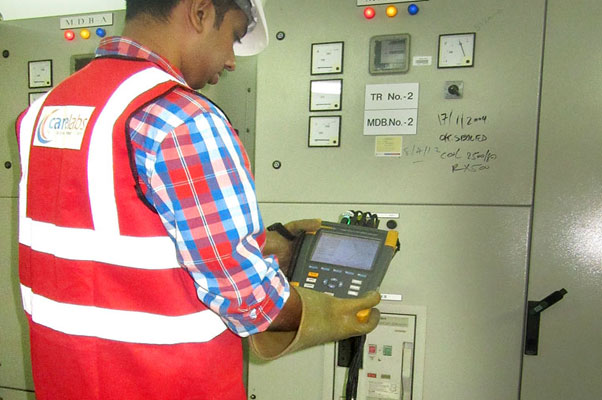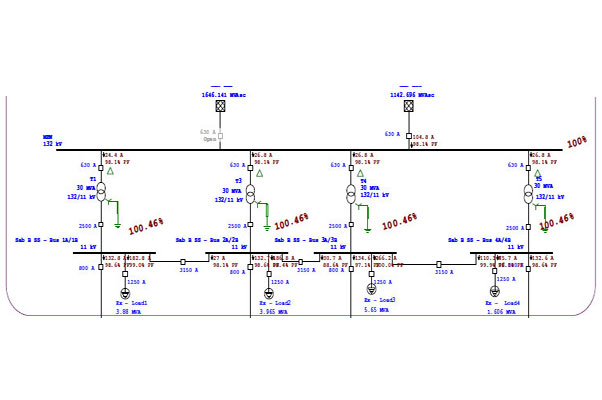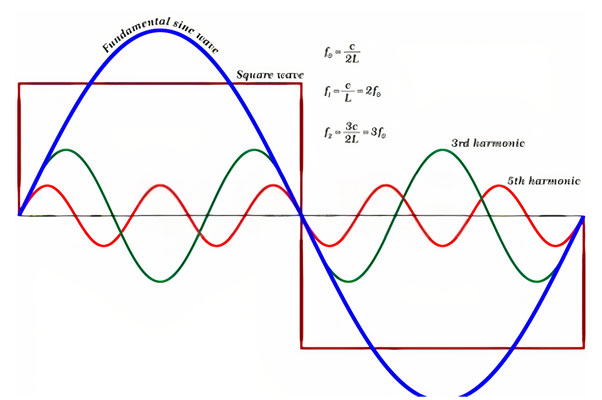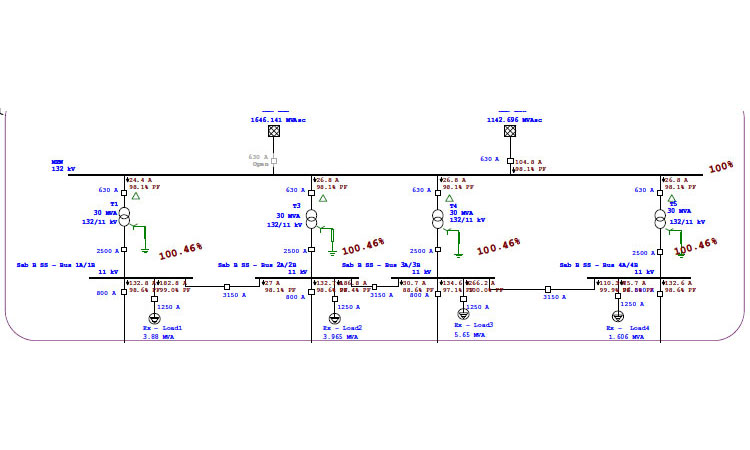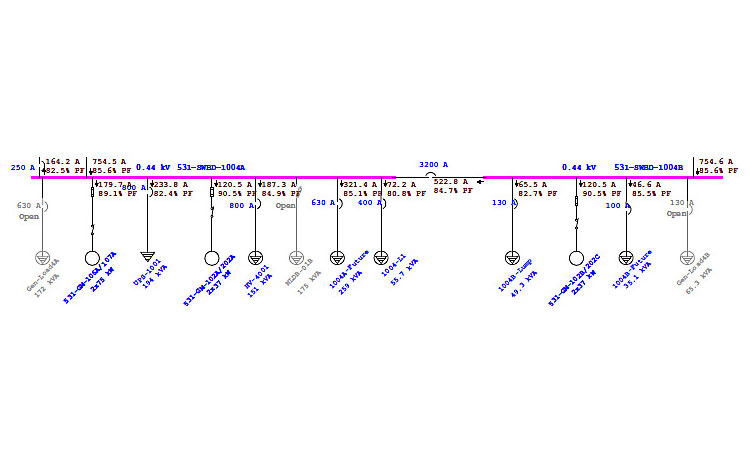A power system analysis comprises several engineering analyses involving the application of scientific analytic principles and processes to provide a power system that is safe, efficient, and reliable for your facility under both normal and abnormal conditions.
A power system analysis aims to understand how a system will operate in different configurations and the effects on the system as it experiences disturbances during capacitor switching, large motor starting, or incident energy as a result of an arc flash. A power system analysis could also be needed for the reliable operation of safety equipment in the event of a short circuit or if any other fault is present.
Power Systems Studies are important for ensuring a stable and reliable electrical supply. A well-designed power system guarantees reliable operation and maximizes plant availability under all operating conditions. The consequences of poorly designed systems include outages, faults, inefficiency, and compromised safety.
A typical power system analysis may include most or all of the following sub-studies:
- Load Flow study & analysis
- Short Circuit study & analysis
- Relay coordination analysis
- Arc Flash hazard study & analysis
- Harmonic analysis
- Dynamic and Transient analysis
- Study of earthing
In this blog, we will look at the first three studies. And understand the principles and procedures to perform each of these studies.
Load Flow Study and Analysis:
A load flow analysis is an assessment of an electrical network to determine how power flows. It aids in determining the power systems operating state, active and reactive power produced, losses, voltage, current, and power factor throughout the power system.
The following three phases included in the analysis of load flow:
- Power system component and network modeling
- The development of load flow equations.
- Employing numerical methods to solve the load flow equations.
The power system data is calculated in three ways:
- One of the most common methods of analysis is the Gauss-Seidel System. The benefits of this method include its ease of use, low computing capacity requirements, and shorter completion time. However, the slow pace of convergence necessitates several iterations. The number of iterations grows as the number of buses increases.
- The Newton–Raphson approach is more advanced, using quadratic convergence, which is useful in more complicated contexts. This approach requires fewer iterations to achieve convergence and therefore consumes less computing power. It is even more precise because it is less vulnerable to complicating variables like slack bus selection or regulation transformers. One downside is that programming can be difficult and necessitates a considerable amount of machine memory.
- Fast Decoupled Load Flow System (FDLF) is another approach to carry out load flow analysis. The primary benefit of this approach is that it needs less computing memory. The calculation speed is 5x faster than the Newton–Raphson technique, making it a common alternative for real-time power grid management. The application of this computer software is restricted. Hence, it is more difficult to modify it to look at other problems such as power system protection or flow.
Short Circuit Study & Analysis:
A short circuit study evaluates all potential operating conditions that the power system may or may not be subjected to. This study’s findings aid in determining whether the equipment will tolerate short-circuiting current before the fault is cleared. The Australian standard AS 3851—1991 gives insight on the same aspect.
A short circuit analysis will include one or more of the following types of short circuits:
- Line-to-line fault in which two phases are shorted together
- Single line-to-ground fault – in which only one phase comes in contact with the ground
- Double line-to-ground fault, in which the two phases and ground are shorted together
- Three-phase fault, in which all three phases are shorted.
It will be easier to build a one-line diagram of the power distribution system once the type of fault is known.
Then, using the obtained single-line diagram and an impedance diagram that includes numerical values for the utility source, transformer, and conductor relative to the usable voltage of each part, perform short circuit calculations.
Quantities such as transformer’s full-load amps, transformer multiplier, short circuit current are calculated. It is critical to compare the obtained results with the equipment ratings to ensure that the power distribution system is equipped with appropriate protective devices at various locations to avoid downtime and harm.
Relay Coordination Analysis:
Relay coordination is a crucial part of power system protection design since coordination schemes ensure fast, selective, and dependable relay operations to isolate the fault. The coordination analysis establishes the degree to which overcurrent protective devices are required in the power system. It also aids in determining the specifications, configurations, and sizes needed to strike a balance between equipment safety and selective system operation.
Data collection processes are carried out to model the system using power system software such as ETAP. To measure the fault currents at each electrical point in the system short circuit analysis is first conducted.
The protective devices are then chosen and calibrated to reduce the effects of system equipment failures. The protective device’s time-current characteristic curves are measured and compared to distinguish regions of coordination failure. Adjustments are made accordingly to achieve selective and reliable operation of protective devices.
Benefits of Power System Analysis:
- Power system reliability is improved.
- Use of suitable rated power system equipment.
- Reduced electrical hazard danger and improved protection
- Electrical installation code, standard, and relevant regulatory compliance.
- Recommendation of alternative methodologies to improve the performance and reliability of the system.
- A record of the power system conditions is created for any future inspections.
Care Labs provides Load Flow study & analysis, Short Circuit study & analysis, and Relay coordination analysis intending to monitor the voltage at various buses, as well as the actual and reactive power flow between buses, analyze the system under various fault conditions and investigate the system’s ability to withstand minor and significant disturbances.
Care Labs offer electrical switchgear risk services in all the major cities of Queensland, New South Wales, South Australia, Victoria, Tasmania, and Western Australia.
To get power system analysis for your company in Australia, contact us or get a quote. Our support representatives will get back to you within 24 hours.



